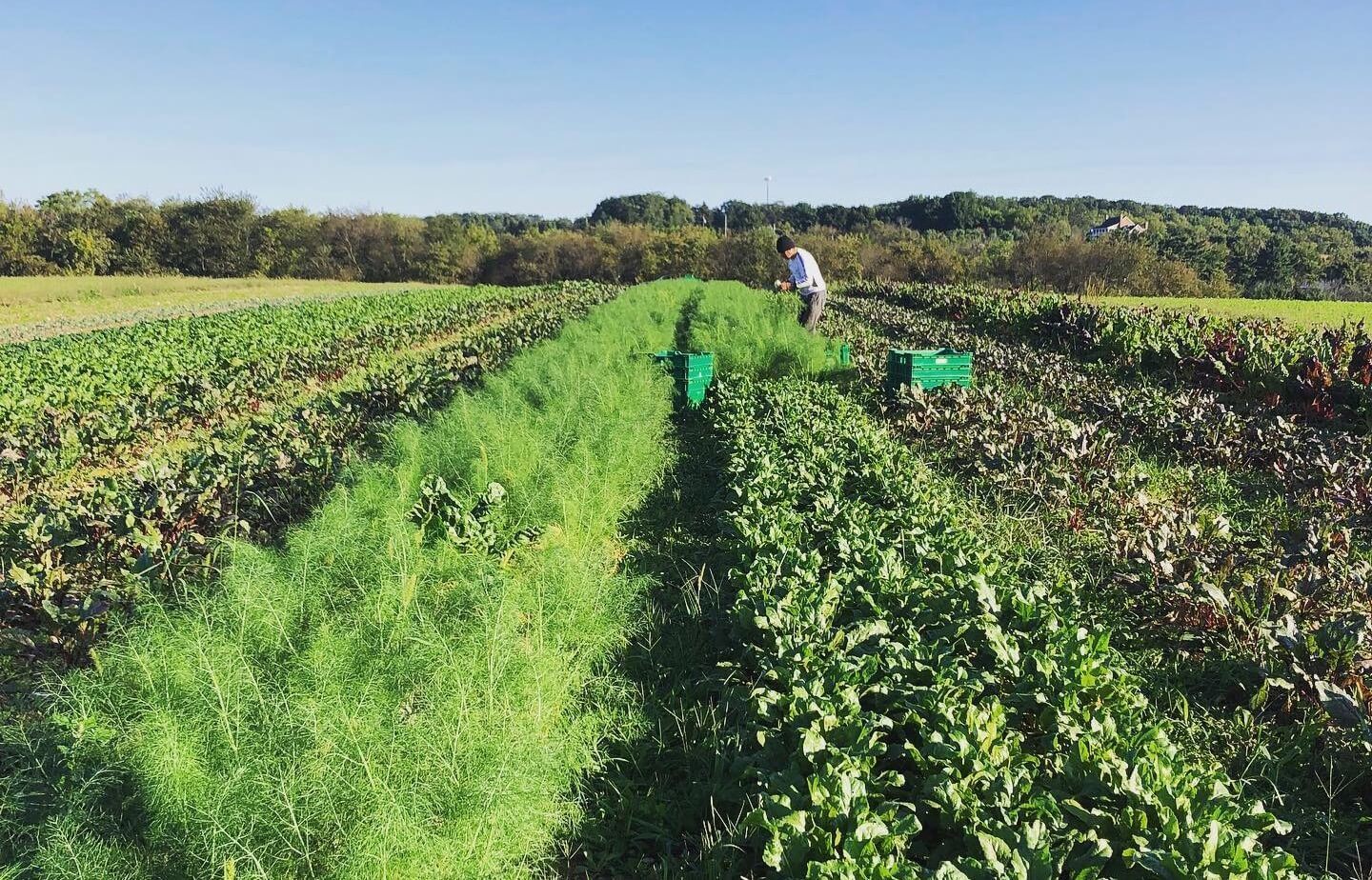Carbon farming is a centerpiece of the Biden administration’s climate strategy. But new research complicates common assumptions about how it can work.
In November, a group of over 150 former government officials and advisers to President Biden published a list of recommendations meant to help his administration “hit the ground running” on the climate crisis. Foremost among the suggested ag proposals was the creation of a federal “carbon bank,” which would pay producers to adopt conservation practices such as cover cropping and no-till farming on their fields.
The basic concept is that these activities help plants suck carbon from the atmosphere and direct it into soil, effectively turning farmland into a big sponge that can sop up all the heat-trapping greenhouse gases we emit. A carbon bank would incentivize farmers to adopt such practices. Down the line, the former officials suggested, the federal government could go on to sell these carbon credits to polluting companies seeking to offset their own emissions.
But there remains a lot that we don’t yet know about soil carbon sequestration—how to accurately measure it, how to price it, and what practices really increase it. This week, research opened up an additional area of uncertainty: A study on interactions between carbon, soil, and soil enzymes raises new questions about how long sequestered carbon actually stays in the ground.
The basic concept is that these activities help plants suck carbon from the atmosphere and direct it into soil, effectively turning farmland into a big sponge that can sop up all the heat-trapping greenhouse gases we emit.
In a recent study, scientists at Princeton University devised a series of experiments that allowed them to observe how carbon molecules stick—and unstick—to clay, a key element in soil that retains carbon.
Scientists have long known that microbes release some carbon in the process of decomposing organic matter in soil. But the long-held assumption is that clay can counteract that by binding with carbon and protecting it from microbial activity. The new findings, published on Wednesday in Nature Communications, challenge how reliable that assumption is.
First, lead author Judy Yang incubated carbon molecules, common soil bacteria, and tiny clumps of clay, formally referred to as clay aggregates, in a petri dish. Under a microscope, she discovered that over time, the bacteria were too large to penetrate the clay, and thus, they were unable to directly access the carbon stored within. That’s the good news—it means the microbes were prevented from breaking down the carbon molecules and releasing them back into the atmosphere.
However, in a separate experiment, Yang introduced enzymes—proteins released by bacteria and fungus to help them process food—into a modified microscope slide containing clay and carbon molecules. Enzymes are significantly smaller than bacteria, and for that reason, they were not only able to penetrate the clay structures, but actually helped release nearly all of the carbon molecules inside within hours. Once carbon is freed from clay aggregates, it becomes accessible to soil bacteria again, which can release it from the ground over time. This process could potentially render soil sequestration a more temporary carbon sink than expected.
Scientists fear that rising levels of atmospheric carbon and higher temperatures bring us closer to triggering an irreversible but destructive, carbon-generating feedback loop in the soil cycle.
“Previously, we thought that [clay-bound] carbon could not be released within an observable time frame,” said Yang, a former postdoc at Princeton and current associate professor at the University of Minnesota. “But we saw that release is happening within hours. Enzymes can get into clay, and they can release clay-protected carbon. If it happens for this type of enzyme, it probably happens for a lot of others, as well.”
To be clear, what happened in Yang’s lab is a highly simplified simulation of what may be happening on the field, stripped of countless variables like other microbial life and soil elements.
Nonetheless, the study helps to shed light on cases where soil has been found to release more carbon than expected under certain conditions, worrying scientists who fear that rising levels of atmospheric carbon and higher temperatures bring us closer to triggering an irreversible but destructive, carbon-generating feedback loop in the soil cycle.
That’s not to say that soil health is an unworthy cause, or that sequestration is completely futile. Rather, Wednesday’s findings could suggest new avenues for soil research, said Rattan Lal, a professor of soil science and director of the Carbon Management and Sequestration Center at Ohio State University. That includes efforts to understand how to help clay retain carbon better.
“Maybe the great carbon storage potential that people think is out there is not permanent as they had anticipated.”
“There are many mechanisms in which [clay] aggregates can be broken,” Lal said, pointing to practices like plowing and fertilizers use. “The objective of sustainable management is to minimize the activities that break the aggregates.”
At the same time, the study may also suggest that policymakers temper their expectations on how much we can depend on soil to absorb the bulk of our emissions long-term.
“Maybe the great carbon storage potential that people think is out there is not permanent as they had anticipated,” said William H. Schlesinger, biogeochemist and retired president of the Cary Institute of Ecosystem Studies, of the findings. Schlesinger has argued healthy soil practices are unlikely to sequester more than a minor sliver of total emissions—especially after factoring in emissions related to irrigation and fertilizer, both of which are often required to keep soil healthy.
Despite the uncertainty, both existing and emerging, that surrounds just how effectively soil can act as a carbon sink, the idea of a federal carbon bank will likely continue to pick up steam under the Biden administration. On Wednesday, the President signed an executive order directing the Secretary of Agriculture (who is yet to be confirmed) to develop a blueprint on “how to encourage the voluntary adoption of climate-smart agricultural and forestry practices that … result in additional, measurable, and verifiable carbon reductions and sequestration” within 150 days.
The idea gets a lot of play in part because it enjoys bipartisan backing, as well as vocal support from farm groups, agribusinesses, and others who stand to benefit from it financially.
Soil carbon sequestration is often framed as a win-win by environmental groups and private enterprise alike: A broad coalition of stakeholders, including non-profit advocates, several of the country’s biggest food processors, and the farm lobby, have thrown their support behind regenerative practices. Some states like California are already ahead of the curve in paying farmers to sequester carbon. And in the absence of a national, publicly-run carbon bank, numerous private companies have sprung up in recent years to fill the void.
The idea gets a lot of play in part because it enjoys bipartisan backing, as well as vocal support from farm groups, agribusinesses, and others who stand to benefit from it financially. The same can’t be said for other practices that would actually cut emissions at their source.
“If we start to say, we’re going to mandate a reduction in fossil fuel use, or mandate increased gas mileage for cars, or mandate that we’re going to take down coal-fired power plants and put up solar—there’s a lot of lobbying against those things,” Schlesinger said. “Almost nobody is unhappy with soil carbon sequestration. The climate people could say, ‘It helps the climate.’ The farmers could say, ‘It makes my soils more fertile.’ What I’m saying is: Those things all may be true but it’s not likely to do much for climate change.”








